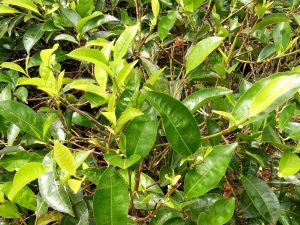The island nation of Sri Lanka is one that prides itself on its national dish of rice and curry. Sri Lanka is placed in good stead geographically; a strategic ‘pit-stop’ on the historic spice trade route from centuries past. Prolific spice trading occurred in Sri Lanka, as it was the perfect spot connecting the Middle East to the Far East of India, China and Malaysia before the Portugese, Dutch and English arrived. It’s only fitting that Sri Lanka fashioned its food culture around a fusion of cuisines over the centuries. Sri Lanka’s cuisine has since arrived at a point where its distinct flavours evolved into some of the tastiest rice and curry dishes you’ll find.

From north to south, east to west, rice and curry is everywhere and served every meal of the day. But don’t be fooled by the simplified term of ‘rice and curry’. Wherever you travel, tastes differ, spice mixes differ and textures of ingredients differ. Think of the combinations of this slow-cooked dish when you start to learn about the staples used – chilli, cardamom, cloves, curry leaves, mustard seeds and fenugreek to name a few. Rice and curry flavours are exuberant, imaginative and individual. So how can you get the full flavours of a vegan rice and curry meal in Sri Lanka?
Start with the rice…Lots of rice!
Rice is the jewel in the rice and curry crown and it comes in a handful of traditional forms. String hoppers are rice noodles made from a simple batter threaded through a string press into stringy strands. Strands are placed onto a hotplate in a flat pancake shape to form a web of noodles. Fresh string hoppers are served immediately from the hotplate. Traditional recipes are vegan; be sure that egg and dairy are not added. Another Sri Lanka favourite is pittu. Pittu is rice flour and coconut made into a crumbling texture before it’s packed into roll moulds then steamed. The rolls are then served to the table whole before they’re spooned onto plates (or banana leaves in Jaffna in the north) for the meal to commence. Simple steamed white or red rice also features in Sri Lanka rice and curry. A stickier version is milk rice – rice cooked over a low heat with coconut cream until solid, then cut into dense squares for serving. Again, make sure coconut milk is used. If coconut milk powder is used, be sure there’s no dairy in the powder. No matter what rice is served, make sure you pile a generous serve into the middle of your plate. You’ll be amazed by the amount of rice you’ll find as it’s as staple as potato is in the West.

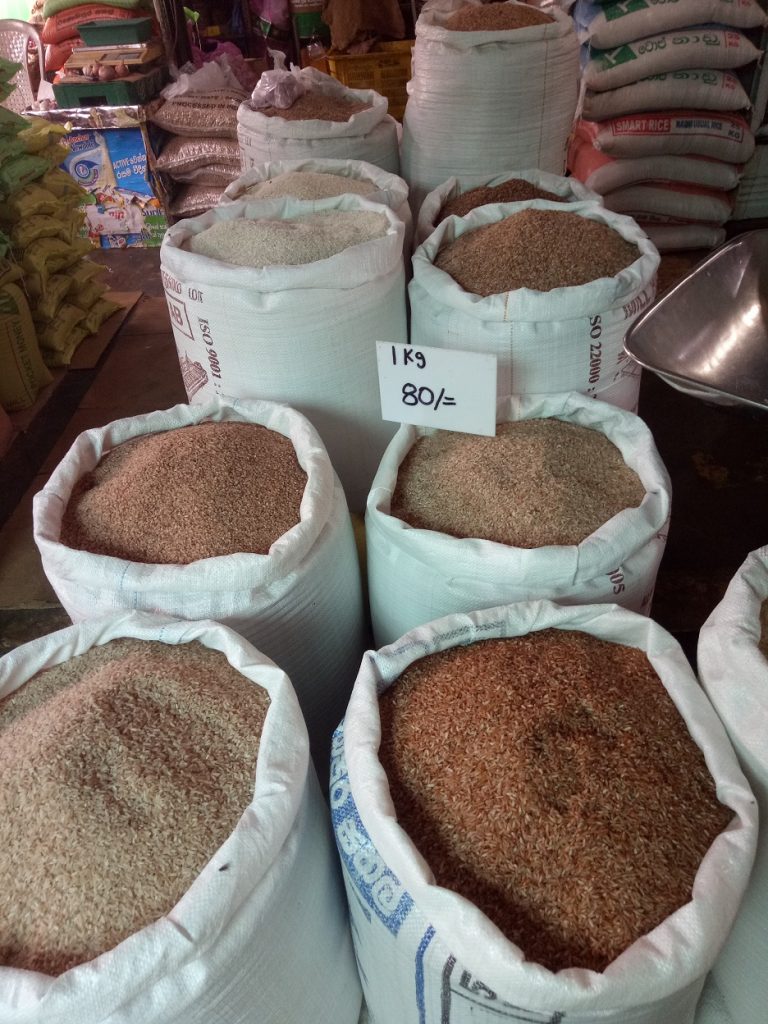
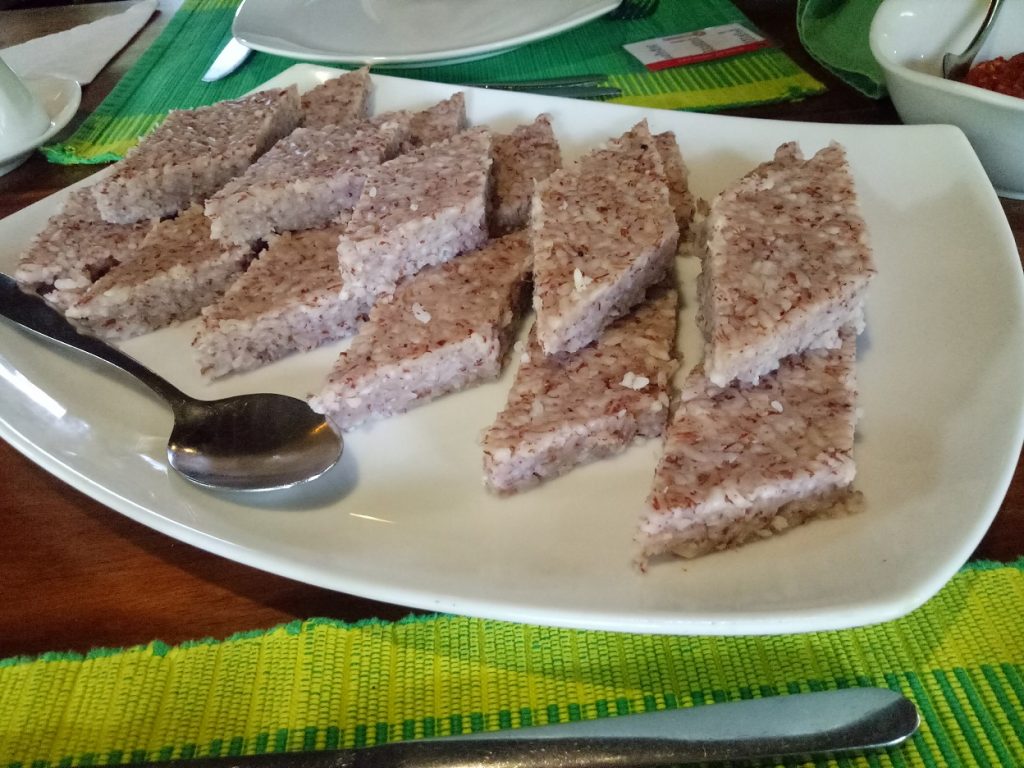
Add your curries, the accompaniment to your rice
Curries are served to the table in serving bowls and you’ll discover a plethora of curries on offer, all with their unique vegetables, spice mixes and flavours. Vegetarian curries can be made vegan if they’re made sans dairy (such as milk, curd, buttermilk and curd) animal-based ghee. It’s essential to speak with a venue about the ingredients first and explain what you don’t eat. Another common ingredient to watch out for is Maldive fish, a cured fish that is used extensively in Sri Lanka cuisine to enhance flavour. It’s only used in small amounts, so it’s vital you ensure it’s not used in your meal when you order.
Once you’ve ensured your meal can be made vegan, then you can explore the many curries made from delicious, sometimes unique, local vegetables. Eggplant, pumpkin, potato, beetroot, beans, squash and cabbage are all delectable ingredients that feature in curries. One ingredient to be on the look-out for is drumstick; a long, green, fibrous vegetable that resembles okra. Each vegetable will be prepared and served with their own flavours and levels of chilli. Another staple is dhal, legumes seasoned in spices and cooked in coconut milk. An exquisite taste to experience.
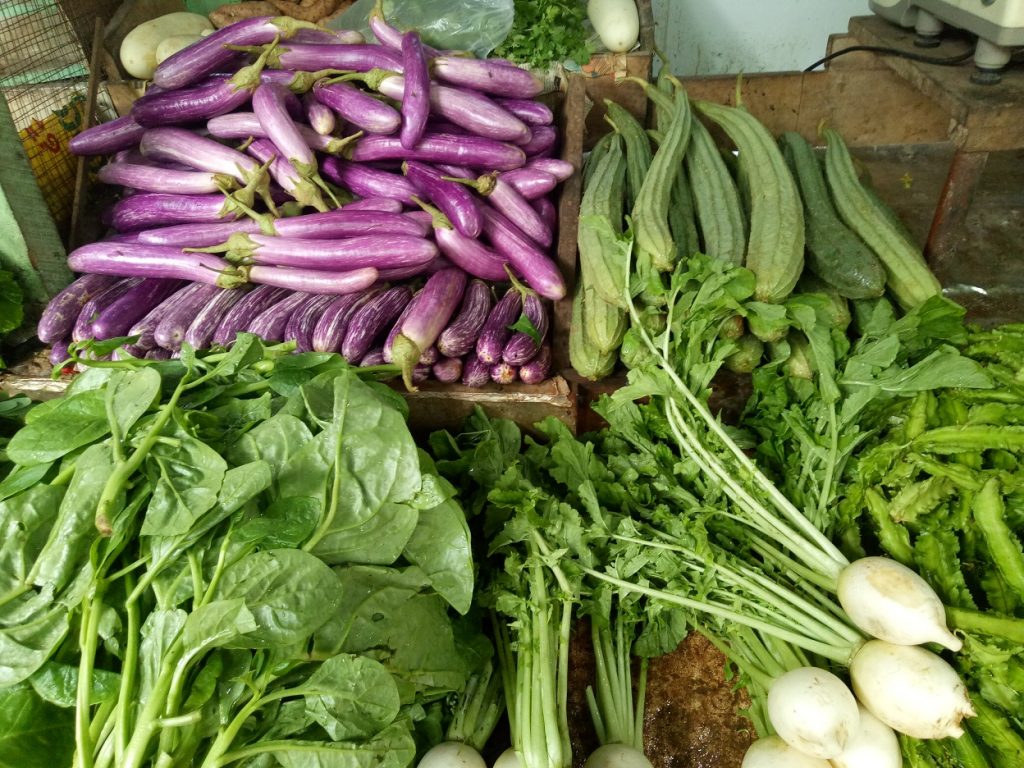
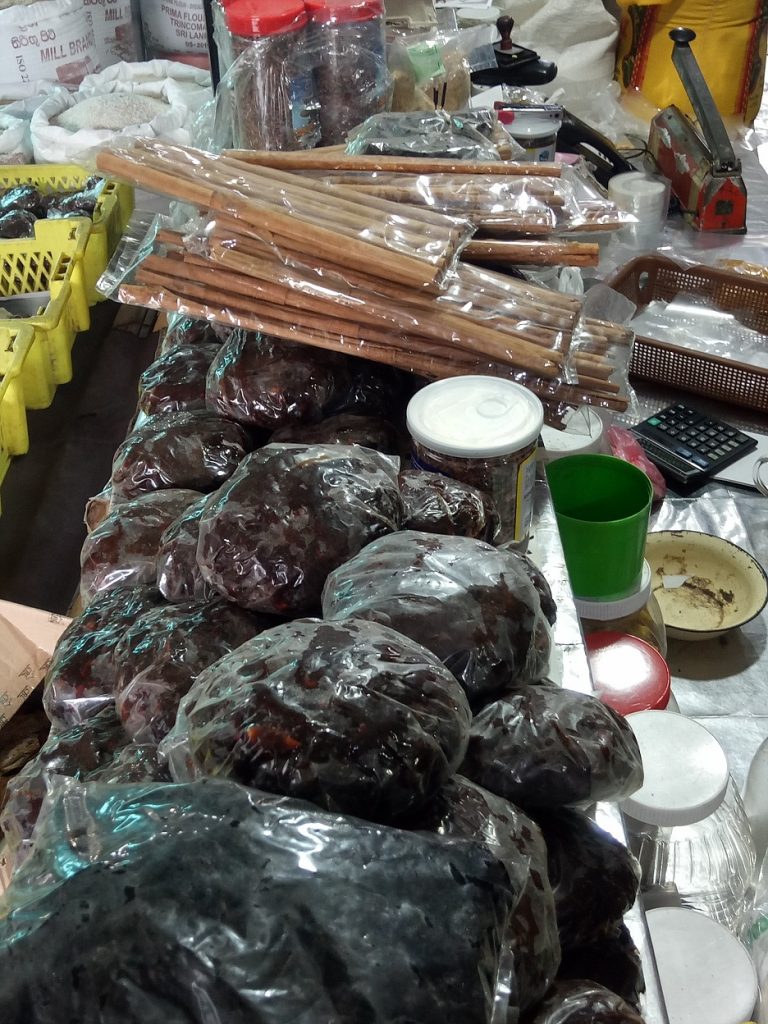
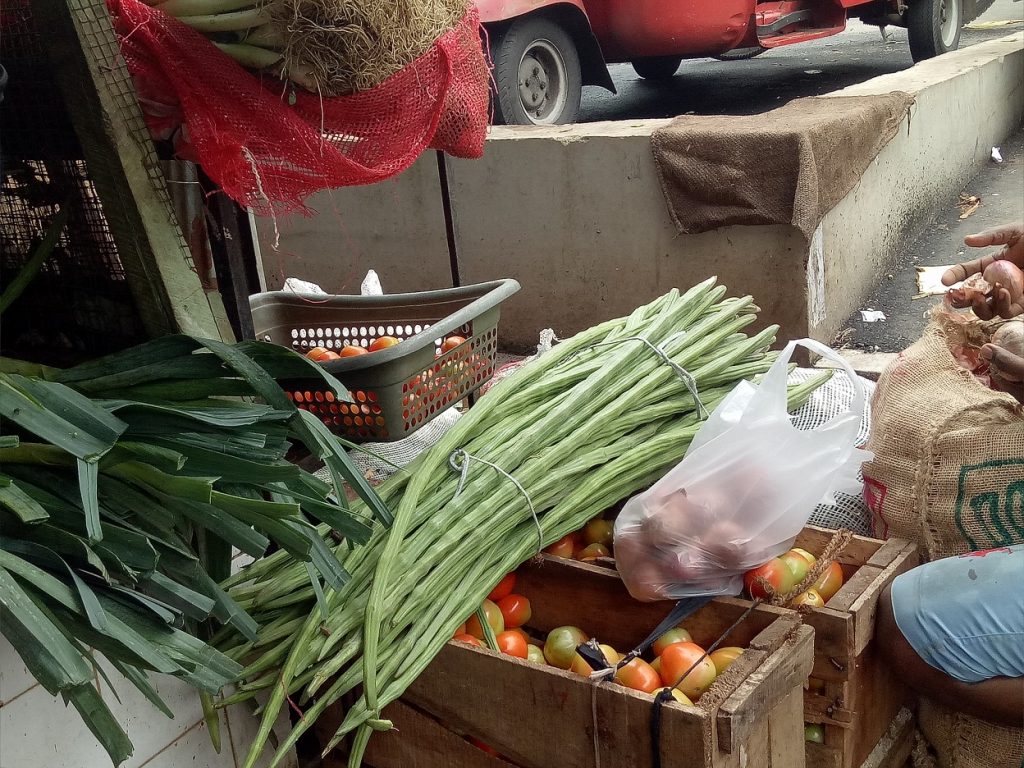
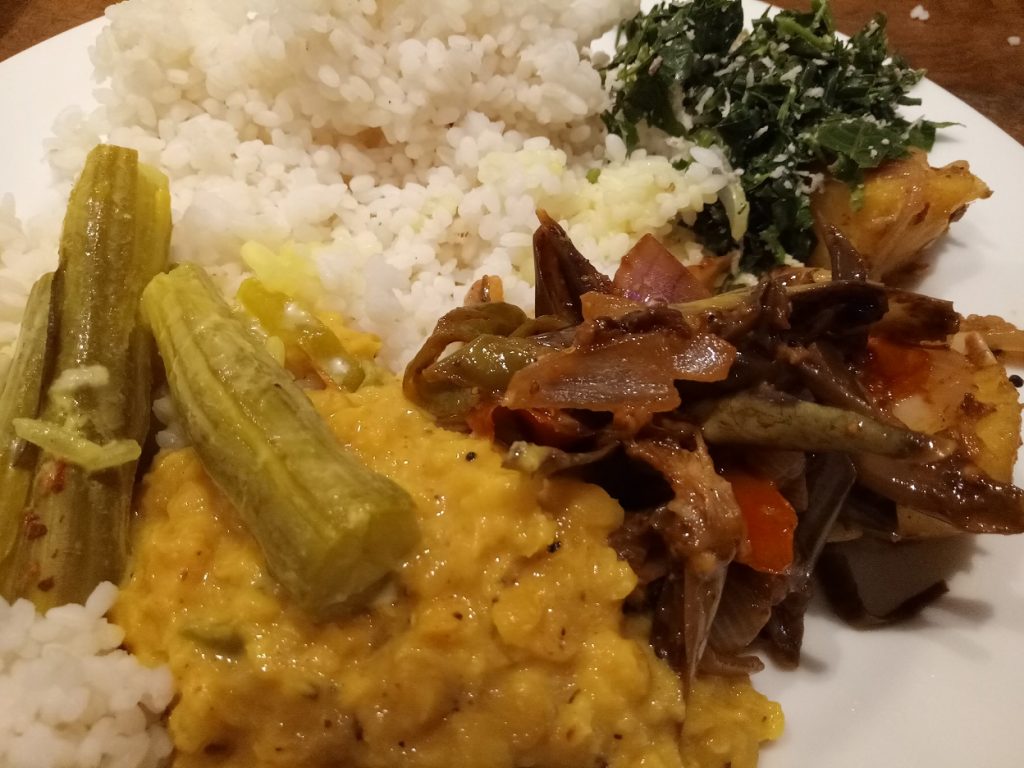
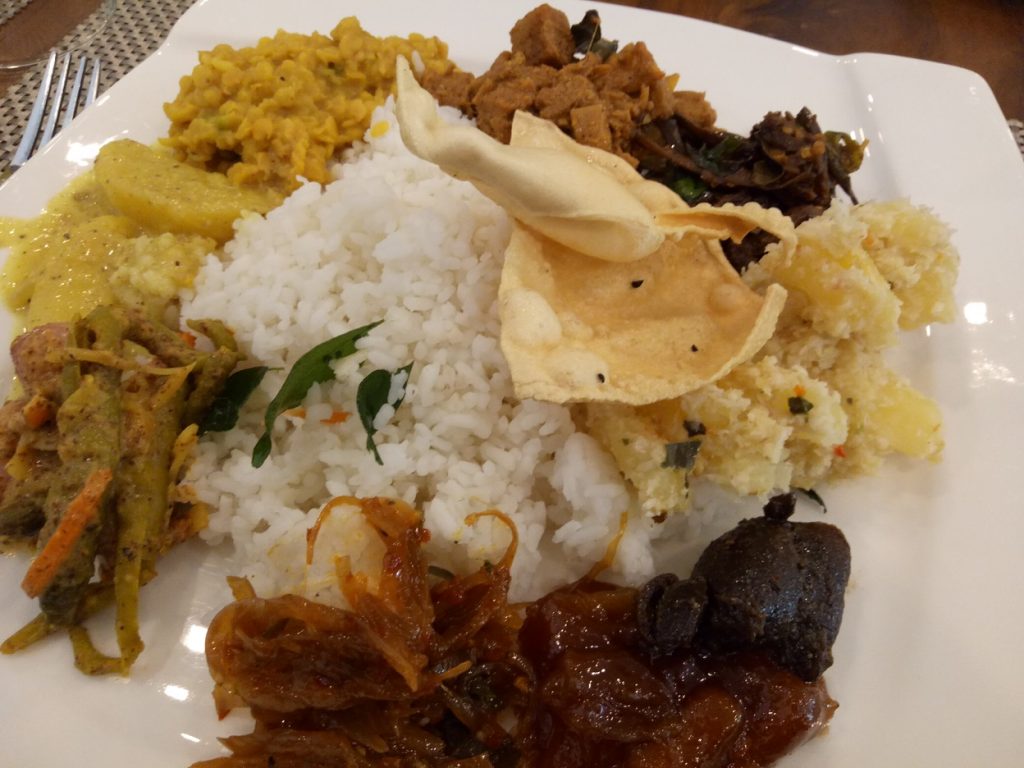
Don’t forget your sambal and salads
A rice and curry meal is naked without sambal. These are served in small amounts on your plate as spicy condiments to your rice and curry meal. Coconut sambal is a favourite – shredded coconut mixed with red onion, chilli and lime juice. Other sambals may be served as a spice and onion mix, or with added tamarind for a sweeter version. Chopped leaves with coconut and diced tomato salads are also found on the rice and curry table, alongside a basket of pappadam that’s served piping hot just before eating.

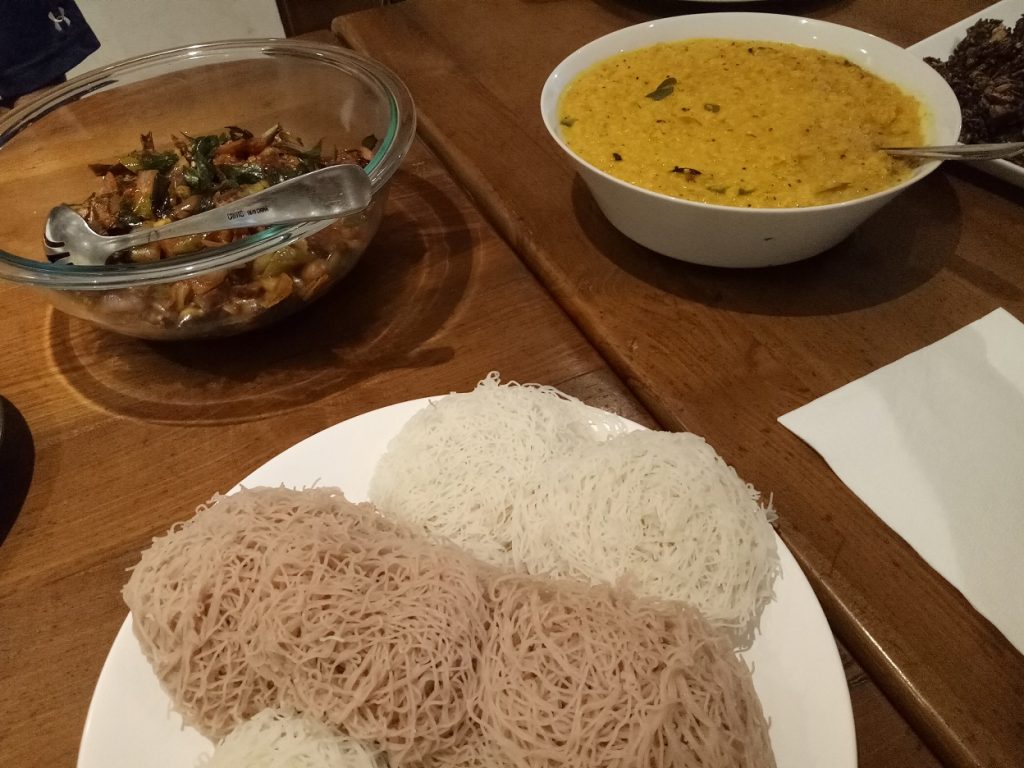
Yes, you can eat with your hands!
Though, you just eat with your right hand. Use the fingers on your right hand to mix rice with curries on your plate before picking up the mix and popping it into your mouth. Only use the tips of your fingers; up to the first line on each finger is used as your guide.
And observe more local etiquette before, during and after you eat:
- Wash and dry your hands before you arrive at the table at the sink that’s offered to you
- During the meal, pass dishes with your clean hand (not your eating hand)
- Start eating when everyone at the table has been served; the eldest traditionally starts
- Don’t lick your fingers! Wash your hands after the meal instead
- Don’t leave the table until everyone finishes eating
Want to experience Sri Lanka’s rice and curry tradition for yourself? The all-vegan tour company VegVoyages travels to Sri Lanka on its 14-day Finding Serendipidy on the Island of Serendip tour. VegVoyages’ 2020 Sri Lanka tour is scheduled for August 23 to September 5.
The tour costs US$2,795 per person twin share and covers all accommodation, meals, activities, transport and guides. Single supplement is also available. The tour starts and ends in Colombo. For all tour dates and pricing, visit the VegVoyages website.
Disclaimer
Justine de Jonge travelled with VegVoyages in August/September 2019. All flights, tour fees, activities and tips were paid for in full by Justine de Jonge. All views expressed in this blog post are her own and did not receive any remuneration in exchange for this blog post.


